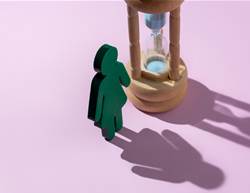Every year, millions of perimenopausal and postmenopausal women dress in layers, carry portable fans, and tough it out because they’re convinced that treating hot flushes is dangerous. And they may think, Oh well, these flushes won’t last long, and even clothes-drenching ones never killed anyone. Here's the news:
How long do hot flushes last?
Hot flushes last longer than was previously thought - seven to 10 years on average. And emerging evidence shows that hot flushes aren't harmless but may be associated with potentially life-threatening heart damage. In a 20-year study of more than 3,000 menopausal women, those who had frequent or persistent hot flushes had a dramatic increase in factors associated with heart disease, which may explain why stroke risk doubles in the 10 years after menopause.
How do hot flushes affect my heart rate and blood pressure?
Every time you have a hot flush, your heart rate and blood pressure increase. In other words, hot flushes make your heart work harder. It also appears that they cause an inflammatory response, which can damage blood vessels. Add to this a hot-flash-induced elevation of LDL (“bad” cholesterol), and it’s no wonder multiple studies now show that women who have hot flushes are far more likely to have damaged blood vessels than those who don’t, even when other risk factors are considered.
Hot flushes last longer than was previously thought - seven to 10 years on average.
This new information may be surprising to women who were advised in 2002 to abandon hormone therapy to avoid an increased risk of blood clots and stroke. That advice was based on the findings of the Women’s Health Initiative (WHI), a large study started specifically to determine whether long-term hormone therapy could prevent heart disease and prolong life.
But more than 70% of the women in the WHI study were over 60. Since most women go through menopause between the ages of 45 and 55 (representing less than 10% of those in the study population), the overall results reflected women who were well past the hot flush years (in other words, women for whom any heart damage had already occurred). An evaluation of those in the 50-to-59 range showed different and reassuring results: In women taking hormone therapy, there was actually a decrease in heart disease and overall mortality.
What can I do to ease a hot flush?
So if you’re one of the 80% of perimenopausal or postmenopausal women who are experiencing hot flushes and you’re concerned about your heart: Yes, lose excess weight, keep exercising, don’t smoke, and eat healthily. But you also may want to rethink the “tough it out” approach to hot flushes. Since there are safe, effective hormonal and nonhormonal options that can ease them (see below), there’s no reason to suffer - and there are now compelling reasons to reduce the heat. Try these methods:
Oestrogen therapy: This can be oral or transdermal (patches, gels, creams, sprays).
Natural remedies: There’s some evidence that isoflavones (phytoestrogens) can ease hot flushes.





.png&h=193&w=250&c=1&s=1)
.png&h=193&w=250&c=1&s=1)


